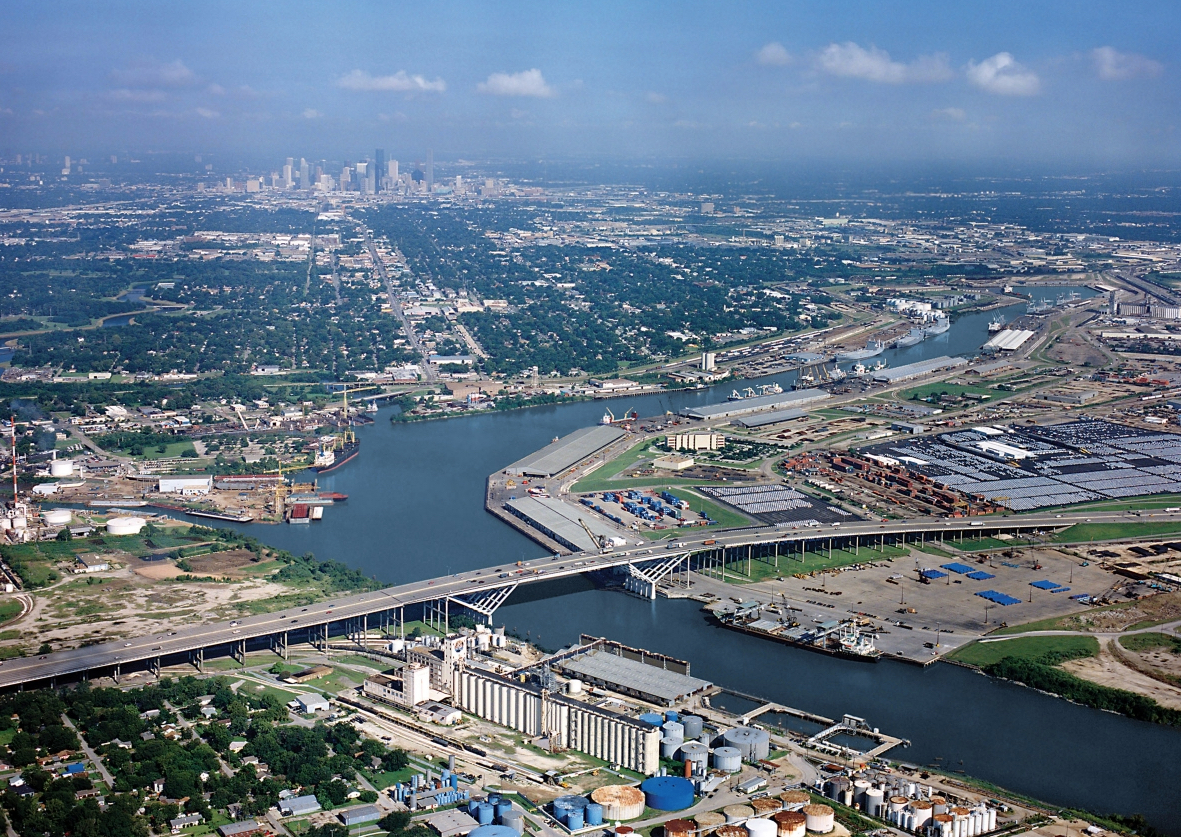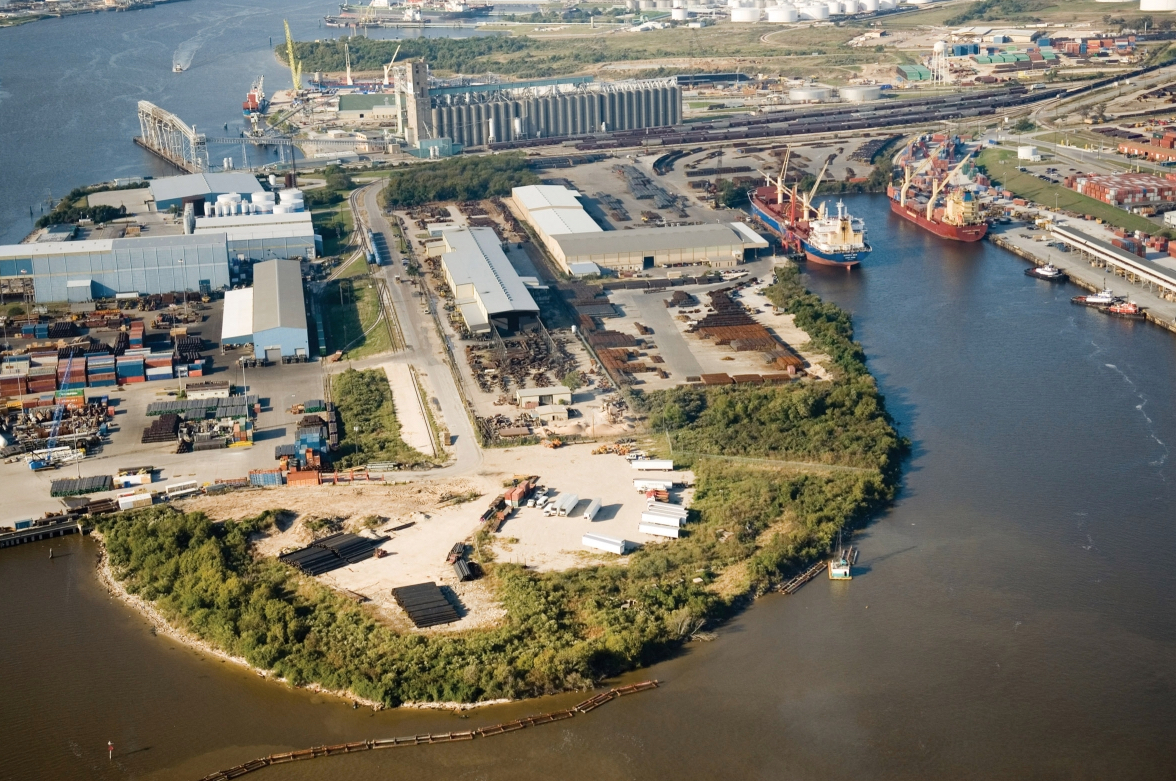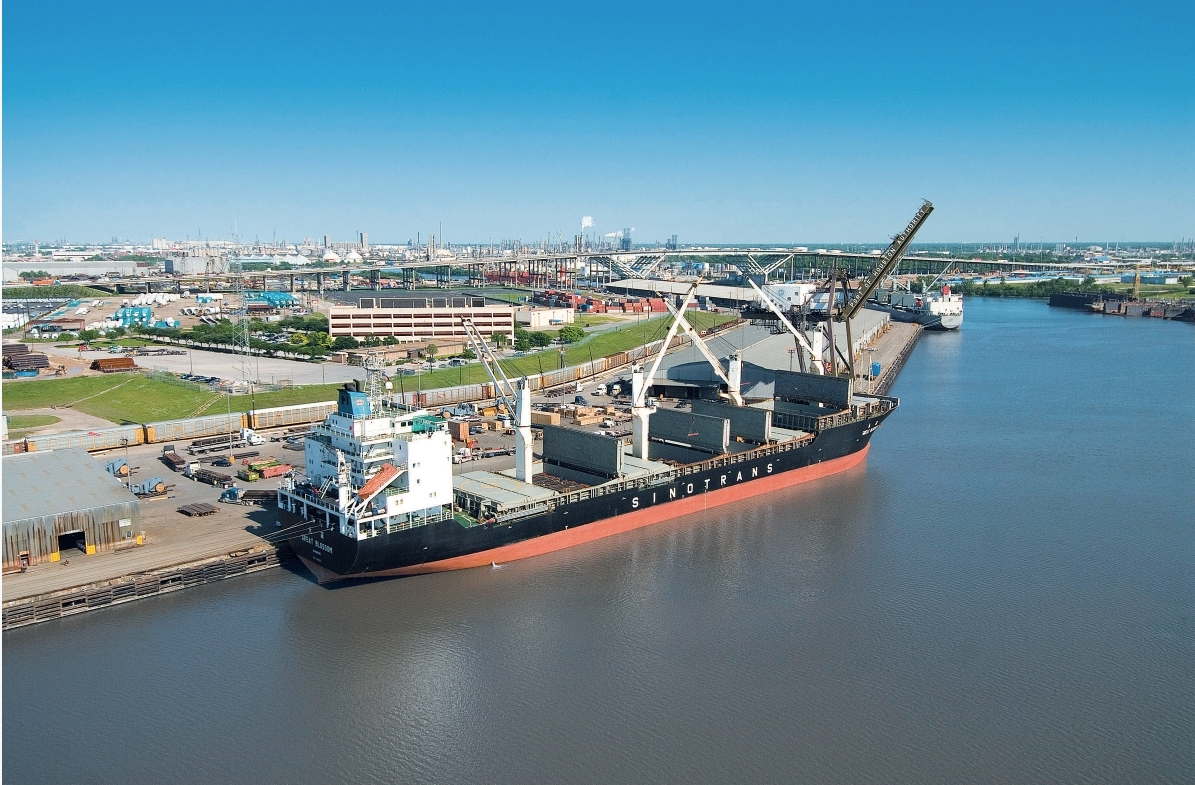The Houston Ship Channel, the busiest waterway in the country, is about to be overhauled. Roughly two-thirds of the more than 50 mi long channel is to be widened, along with other improvements intended to assist navigation to and from the Port of Houston, which recently announced that it had become the top U.S. port in terms of total waterborne tonnage.
Authorized by Congress in December, the Houston Ship Channel Expansion received another boost in January when the U.S. Army Corps of Engineers provided its first round of construction funding for the project.
The main Houston Ship Channel extends for 52 mi, extending from its opening at Galveston Bay to its western terminus at the Port Houston Turning Basin Terminal. The port’s Barbours Cut and Bayport container terminals are connected to this main ship channel by approximately 6 mi of smaller channel. Overall, the Houston Ship Channel along these combined 58 mi serves eight public terminals and more than 200 private terminals, which are collectively known as the Port of Houston. The port is overseen by the Port of Houston Authority, also referred to as Port Houston, which is an independent political subdivision of the state of Texas.

“As this port grows, the channel must expand too,” says Rich Byrnes, the chief port infrastructure officer for Port Houston. “Despite COVID-related downturns, Houston’s imports and exports have been resilient.”
Wider is better
The Houston Ship Channel Expansion is also known as Project 11 because it will be the 11th major expansion of the channel. The project involves widening significant portions of the channel to facilitate safer, more efficient navigation. “This project will improve approximately 41 miles of the 58 approximate miles in the channel system,” says Lori Brownell, P.E., M.ASCE, the director of channel improvement for Port Houston.
To this end, more than 26 mi of the main channel within Galveston Bay will be widened to 700 ft from its existing 530 ft, says Shakeel Ahmad, P.E., the project’s lead civil engineer at the Galveston District of the Corps. The Bayport Ship Channel, a 4.1 mi long stretch of the smaller channel that serves the port’s Bayport Container Terminal, will be widened to 455 ft, Ahmad says. Currently, that channel ranges in width between 300 and 400 ft. The 1.6 mi long Barbours Cut Ship Channel, which serves the port’s Barbours Cut Container Terminal, will be widened to 455 ft from its existing width of 300 ft. Further inland, along what is known as the bayou reach of the ship channel, the project also will deepen and widen various sections of the channel and enlarge a turning basin.
“The (channel’s) ultimate width of 700 ft will enable larger ships to pass with fewer restrictions, providing for a safer and much more efficient channel,” Byrnes says. “That efficiency translates to lower transportation costs as well as positive impact in air quality, as emissions of carbon dioxide, nitrogen oxide, and other greenhouse gases will be reduced 3 to 7 percent per year due to less waiting and idling and smoother flow of two-way traffic.

“Water and habitat quality will benefit too,” Byrnes explains. “Over half of this project involves work creating environmental benefits by using dredged materials to build bird islands, marsh habitats, and adding hundreds of acres of new water-filtering oyster reefs.”
Dredging will be conducted by means of a “combination of mechanical and cutterhead dredges, with the dredge type being at the discretion of the contractor performing the work,” says Harmon Brown, Ph.D., the project manager for the Houston Ship Channel at the Galveston District. More than 60 percent of the dredged material will be reused beneficially, either in the creation of marsh cells, bird islands, or oyster beds, Brown says.
Recent good news
Project 11 received congressional authorization in December with the passage of the Water Resources Development Act. The legislation was included as part of an omnibus appropriations bill signed into law by former President Donald Trump on Dec. 27. (Port Houston, the nonfederal sponsor for Project 11, initiated the project about a decade ago.)
Less than a month after WRDA’s passage, Project 11 received more good news. On Jan. 19, Port Houston was awarded a “new start” designation for the project and $19.5 million in federal funds to be used for oyster reef mitigation ahead of major construction.
“The award is critically important for the port and channel stakeholders, as this designation and funding will allow the Corps and the port to execute a Project Partnership Agreement and for the port to begin construction on the critical elements of the project,” says a Jan. 19 news release from Port Houston.
The new start designation is a “key milestone that clarifies the path for working together with the Corps,” Brownell says. “The next steps are to align on construction agreements so that we can move from planning and design to actual construction.
“Most of the design is already at the 95 percent level because we started working on it over a year ago with advanced funding by the port,” Brownell says. “We need to finish this with collaboration with the Corps and anticipate being ready to let contracts this year.”
Expedited delivery
The Corps previously has estimated that the overall project is expected to cost approximately $877 million. Of this amount, the Corps is to pay nearly $463 million, while Port Houston must cover the remaining $414 million. “However, accelerating this project is a priority for Port Houston and local industry users, so the local contributions could exceed 80 percent under advanced funding agreements,” Brownell says.

Along these lines, the port has sought to work with the Corps to expedite project delivery as much as possible, so the project can be completed faster and more cost-effectively. “Port Houston has advanced substantial funds to get the design effort and investigations going since the fall of 2019, to have them ready once the authorization and new start (designation) would be in place,” says Charlie Jenkins, the senior director of strategic programs and asset management at Port Houston.
As a result, this “tremendous innovation in partnership” between the port and the Corps “will take years off the overall process,” Jenkins notes. “The accelerated project will involve advanced local funding to accelerate execution. Exact details and ultimate cost shares are in discussions.”
The initial construction funding from the Corps for the oyster mitigation work will cover the construction of 19 sections of oyster reef, Brown says. The design, which is being prepared by Port Houston, is “currently in the final phase and will need to undergo a review by the (Corps) teams to ensure compliance with (Corps) policy as well as environmental regulations and the terms of mitigation agreement,” Brown says. The Corps expects to advertise the construction contracts for this work in September, he notes.
Ultimately, as many as 12 construction contracts will be awarded for the expansion project, Jenkins says. In addition to handling the oyster mitigation work, the Corps will award construction contracts for most of the improvements to the bayou section of the ship channel. Meanwhile, Port Houston will award contracts for the dredging of the bay sections of the channel and one segment of the bayou section.
Currently, Project 11 is expected to be completed by 2026, Jenkins says.




